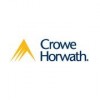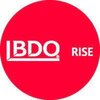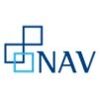
i
Filter interviews by
EY Global Delivery Services ( EY GDS) Junior Developer Interview Questions and Answers
EY Global Delivery Services ( EY GDS) Junior Developer Interview Experiences
1 interview found
(1 Question)
- Q1. Tell me about yourself
(1 Question)
- Q1. General questions about Java
Interview questions from similar companies

Aptitude topic was as generally appears in other placement tests , coding questions(not that much hard )
(1 Question)
- Q1. Asked for the introduction , then asked questions from the resume . Also the OOPS concept and interface
Interview Preparation Tips

I applied via Company Website and was interviewed in Jan 2021. There were 4 interview rounds.
Interview Questionnaire
1 Question
- Q1. Question about taxation learned in college and basic accounts related question
Interview Preparation Tips

Senior Associate Interview Questions & Answers
Escalon Business Servicesposted on 21 Apr 2021
I applied via Naukri.com and was interviewed in Mar 2021. There were 5 interview rounds.
Interview Questionnaire
1 Question
- Q1. There were three rounds. First was HR, then Ops and lastly Salary discussion. Ops round was basically technical round where you will be interviewed on your technical knowledge.
Interview Preparation Tips

I applied via Fast career and was interviewed before Apr 2021. There was 1 interview round.
(1 Question)
- Q1. I have appeared for statutory audit interview in January 2021. Questions were based on Ind AS 116 115 EPS, Inventory , CARO, IFC, Controls Etc. Articleship experience in detail.( All type of worked carried...
Interview Preparation Tips

I applied via Referral and was interviewed before Jan 2021. There were 3 interview rounds.
Interview Questionnaire
1 Question
- Q1. What are the carve outs in various IND AS and IFRS
- Ans.
Carve outs in IND AS and IFRS refer to exceptions or exclusions from the standard accounting treatment.
IND AS 101 allows first-time adopters to use previous GAAP for certain items
IFRS 1 allows exemptions for certain disclosures and retrospective application
IND AS 109 has carve outs for hedge accounting and impairment
IFRS 9 has carve outs for financial liabilities and macro hedging
IND AS 115 has carve outs for certain c...
Interview Preparation Tips

I applied via Referral and was interviewed before Dec 2020. There were 5 interview rounds.
Interview Questionnaire
1 Question
- Q1. Technical questions on GST
Interview Preparation Tips

Interview Questionnaire
1 Question
- Q1. Introduction

Interview Questionnaire
1 Question
- Q1. INDAS, CARO, SAs

I applied via Referral and was interviewed before Dec 2021. There were 3 interview rounds.

(2 Questions)
- Q1. General background questions
- Q2. Questions related to work experience
(1 Question)
- Q1. Questions related to work done in the last organisation
Interview Preparation Tips
EY Global Delivery Services ( EY GDS) Interview FAQs
Tell us how to improve this page.
EY Global Delivery Services ( EY GDS) Interviews By Designations
- EY Global Delivery Services ( EY GDS) Consultant Interview Questions
- EY Global Delivery Services ( EY GDS) Senior Consultant Interview Questions
- EY Global Delivery Services ( EY GDS) Analyst Interview Questions
- EY Global Delivery Services ( EY GDS) Advanced Analyst Interview Questions
- EY Global Delivery Services ( EY GDS) Senior Associate Interview Questions
- EY Global Delivery Services ( EY GDS) Tax Analyst Interview Questions
- EY Global Delivery Services ( EY GDS) Assistant Manager Interview Questions
- EY Global Delivery Services ( EY GDS) Associate Consultant Interview Questions
- Show more
Interview Questions for Popular Designations
- Junior Software Developer Interview Questions
- Junior Software Engineer Interview Questions
- Junior Engineer Interview Questions
- Junior Executive Interview Questions
- Junior Web Developer Interview Questions
- Junior Officer Interview Questions
- Junior Engineer Civil Interview Questions
- Junior Business Analyst Interview Questions
- Show more
EY Global Delivery Services ( EY GDS) Junior Developer Interview Process
based on 1 interview
Interview experience
Interview Questions from Similar Companies
Fast track your campus placements
|
Senior Consultant
3.2k
salaries
| ₹8.4 L/yr - ₹32 L/yr |
|
Assistant Manager
2.3k
salaries
| ₹9.4 L/yr - ₹33 L/yr |
|
Manager
1.7k
salaries
| ₹14.4 L/yr - ₹55 L/yr |
|
Consultant
1.5k
salaries
| ₹4.8 L/yr - ₹20.2 L/yr |
|
Senior Associate
1.5k
salaries
| ₹5 L/yr - ₹20 L/yr |

Ernst & Young

TCS

Accenture

BDO India LLP
- Home >
- Interviews >
- EY Global Delivery Services ( EY GDS) Interview Questions >
- EY Global Delivery Services ( EY GDS) Junior Developer Interview Questions

















